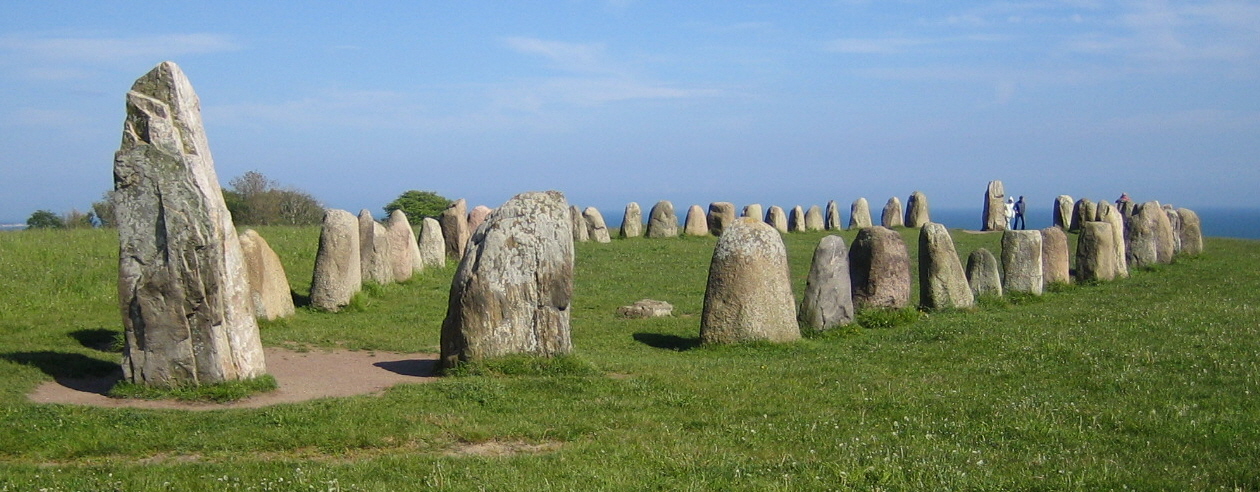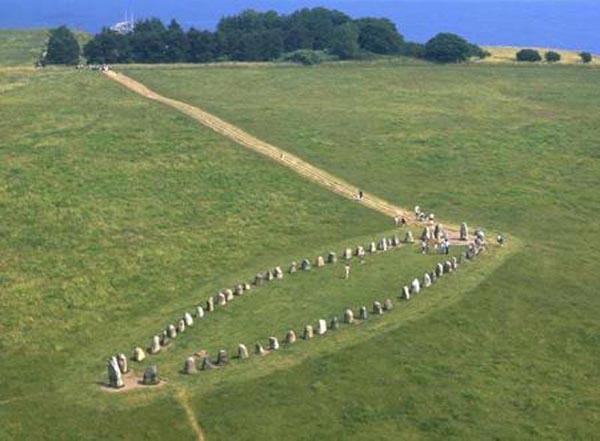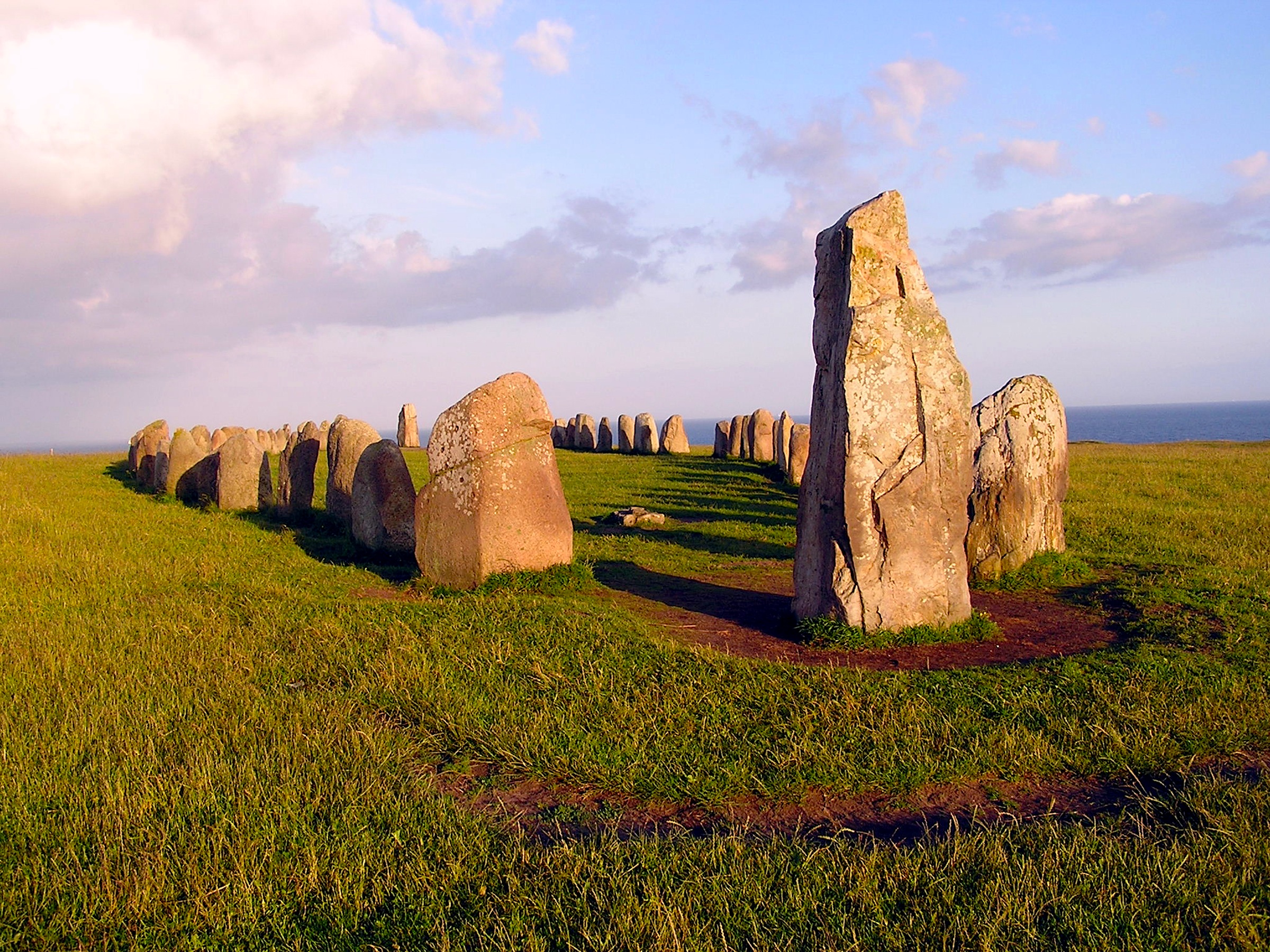Ale's Stones
Ales stones or ale stenar ( German: " The stones of Ale " ) in the Swedish municipality of Ystad in Scania ( Skåne) is 67 meters long and 19 meters wide, one of the largest surviving ship settling in Scandinavia. The stones are considered as national interest and are a much visited attraction.
Description
Consisting of 59 stones stone ship is situated on a 37-meter- high hill on the Baltic Sea coast near the village Kåseberga in southern Skåne. The coastline is characterized by a steeply descending to the sea escarpment.
The 0.5 to 1.8 ton stones are arranged in the form of a ship. The approximately three -meter-high Steve stones of the bow and stern are greatest, the height of the stones takes from there toward the center. While the majority of the stones from locally occurring sandstone is, there are some stones from Hardebergasandstein that was broken about 20 kilometers away at Simrishamn.
Worked flints, pottery shards and an urn with fragments of burnt human bones and charcoal were In Märta Strömberg conducted excavations in 1997 in the area found that with the C14 method to the Vendel ( circa 600 AD ) were dated, which also is confirmed by the decor of the urn. It is assumed that the objects are found simultaneously with the stone ship.
The system was modified several times since its first graphic representation in 1777. At that time, the central stone ship were right and left two groups each consisting of three stones, which were interpreted as a smaller ship subsidence. You have now disappeared; But carried out in 2006 using ground-penetrating radar and magnetometer investigations of the site showed soil changes after in this area. Before the first renovation of 1916 only 16 of the 59 stones stood upright, a large part of the area was covered with drifting sand. At that time, some stones were erected and the shifting sand away. The absence of adequate records of the work exist, it is unclear whether some of the stones was added as for example the rudder at the stern stone. For the so-called altar stone has a height of 2.75 meters was specified in 1916, while the next exposure in 1956 only 1.40 meters was measured; Here, too, an exchange or a damage of the stone are possible. In this second restoration, sand and soil were brought to the stones with heavy machinery, remained under an archaeological survey and documentation of the changes.
North of the plant in 2006 outlines a circle with a rectangular structure at its center were detected. This is interpreted as a possible indication that Ales stones originally was part of a larger complex.
The interpretation of the system by the amateur archaeologist Bob G Lind, who sees a Bronze Age solar calendar in Ales stones is unanimously rejected by professional scientists. However, his assessment is presented in addition to the classical interpretation as grave system on the 2007 as prepared by the Riksantikvarieämbetet signs.
The Swedish poet Anders Osterling (1884-1981) depicts Ales stones in his well -known poem Ales stones from the collection of poems clays från havet ( 1933).









